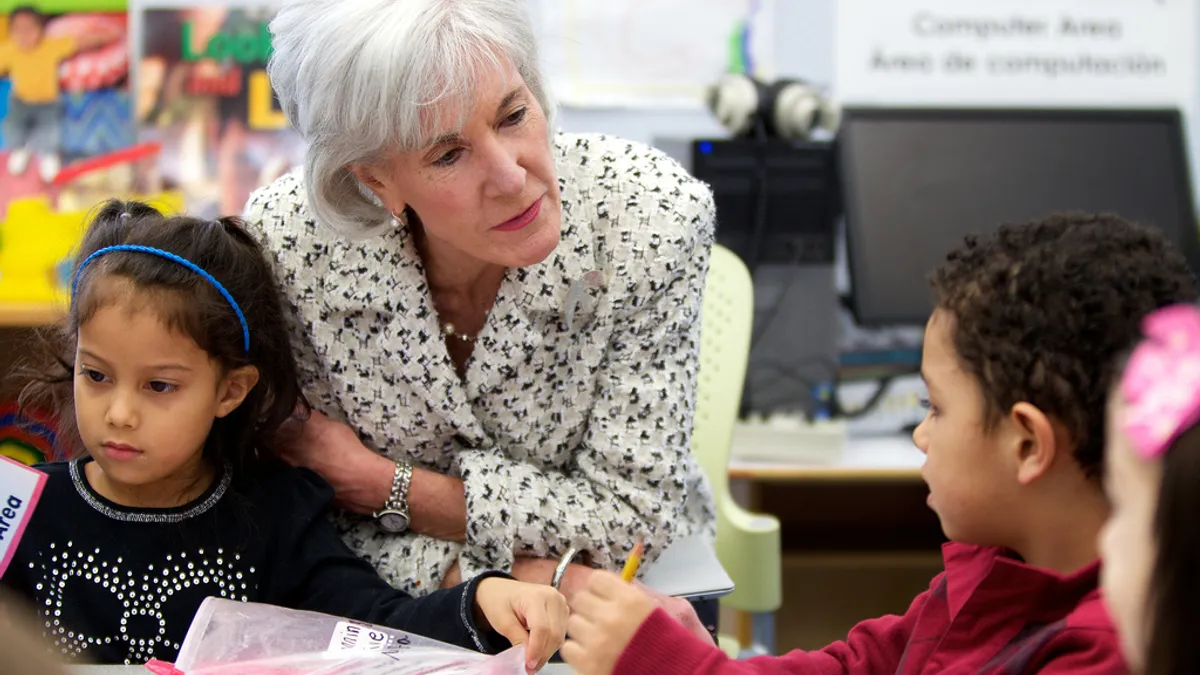Dive Brief:
-
Predictions that the teaching shortage will worsen due to the COVID-19 outbreak should cause school leaders to rethink how they manage teacher staffing, recommends the American Institutes for Research in a new report.
-
Proponents say virtual learning and attention to personalized instruction for students create an ideal moment to change teaching structures so educators have opportunities to expand their professional skill sets.
-
Novel solutions include differentiating staffing, which includes building instructional teams based on each teacher’s strengths and desire to learn new skills.
Dive Insight:
Overnight, it seemed, some teachers’ roles changed from being leaders in their classrooms to including broader responsibilities as mentors and coaches to other teachers, curriculum designers, technology facilitators, data coaches and assessment designers. What if that were the norm, asks the AIR paper.
The differentiated school staffing approach is gaining attention as the pandemic continues to disrupt traditional education approaches and structures and as concerns about educator shortages intensify.
One approach suggested by AIR, and developed by consulting group Public Impact, is the Opportunity Culture initiative. In this structure, an experienced and effective teacher leads a small, collaborative team of teachers in the same grade or subject. The multi-classroom leaders use student data to help the team of teachers prepare for instruction, evaluate each student’s educational progress and make adjustments where needed.
Another potential staffing shift would encourage teachers to be leaders in different education-related areas, such as instruction, curriculum, learning through technology, data analytics and more, according to the AIR report.
“This is a great chance to rethink how technology is used by high-quality teachers and to address shortage areas,” said Lynn Holdheide, senior advisor of the Center on Great Teachers and Leaders. A recent report from GTL, co-written by Holdheide, suggests state education systems consider funding options that allow highly effective teachers to teach multiple classrooms through virtual learning formats with support from paraprofessionals or other staff.
Creating different teacher staffing structures would allow proven teachers to reach more students but the approaches could also help retain teachers who desire leadership roles without leaving the classroom, say advocates. An overhaul could also impact how teachers are trained and certified.
Teacher shortages exist for subjects such as STEM, special education, and other specialties, and the pandemic is likely to exacerbate these vacancies, AIR reports. An analysis from the Learning Policy Institute said that a 15% reduction in state education funding could equal the loss of just under 319,000 teaching positions in the U.S., or a 8.4% reduction in the public school teaching workforce. Potential budget shortfalls, pre-existing teachers shortages and low teacher morale is causing a “trifecta of challenges” for school staffing goals, according to AIR.
“[Teacher shortages are] not going to get better and we have to be creative,” Holdheide said.













